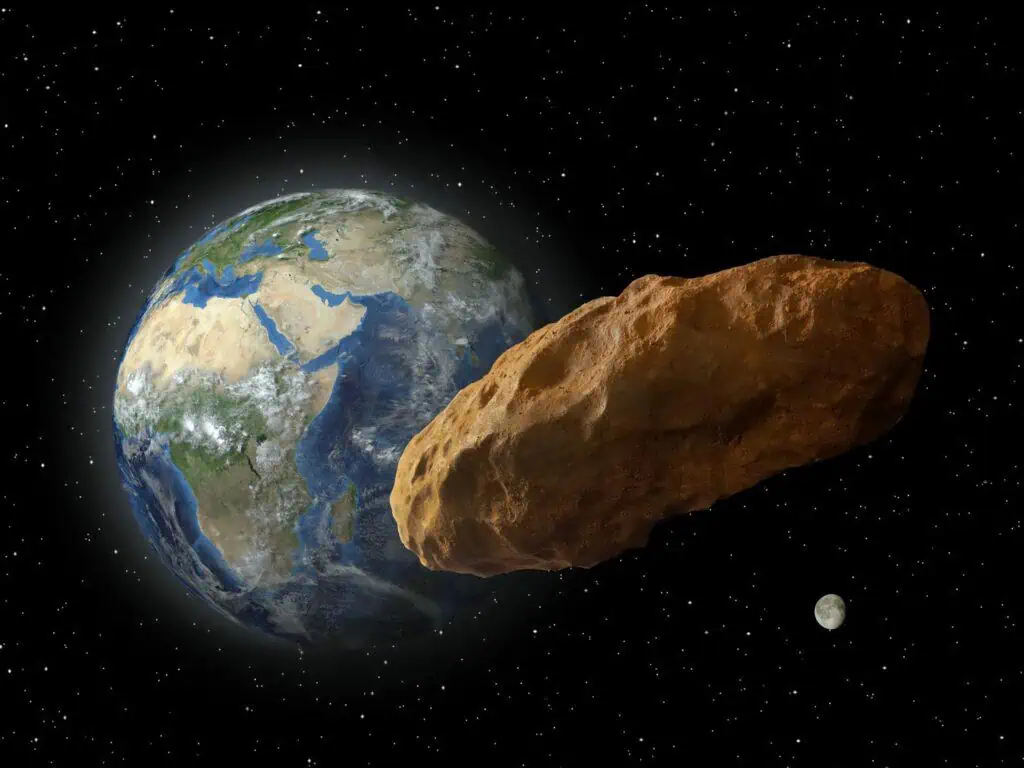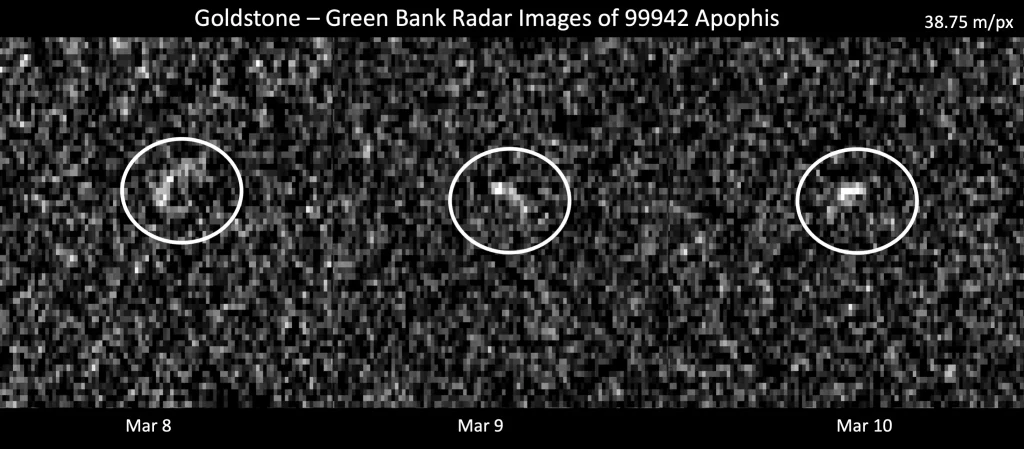A massive 1,100-foot asteroid is predicted to make a breathtakingly close approach to Earth in 2029. Could it hit our planet? Let’s dive into what NASA has discovered.

Apophis: The Asteroid and Its Close Approach
Mark your calendars for Friday, April 13, 2029! A colossal asteroid named Apophis will glide past Earth. This space rock is about 375 meters across, making it larger than 90% of known asteroids. It’s set to be the first asteroid of this size to pass between Earth’s geostationary satellites and the Atlantic Ocean, coming exceptionally close.
If weather conditions permit, people in the Atlantic, Europe, Africa, and Asia will be able to witness this celestial event. The asteroid’s name, Apophis, is derived from an ancient Egyptian demon known for chaos and destruction.

The Meaning and History of Apophis
Officially designated as 99942 Apophis, this asteroid was discovered on June 19, 2004, by astronomers at Kitt Peak National Observatory. Classified as an S-type asteroid, Apophis is composed of silicate minerals and nickel-iron. It completes an orbit around the Sun every 324 days and makes periodic close approaches to Earth.
The name “Apophis” is inspired by Apep, an Egyptian serpent god symbolizing darkness and disorder. Despite its ominous name, scientists have closely monitored Apophis’s trajectory and confirmed it poses no imminent threat to Earth.

Apophis, the near-Earth asteroid discovered on June 19, 2004, by astronomers Roy Tucker, David Tholen, and Fabrizio Bernardi, was named after the Egyptian god Apophis, who symbolized chaos and destruction. The asteroid’s naming was inspired by the TV series “Stargate SG-1,” where a recurring villain named Apophis posed a significant threat to Earth’s civilization. The decision to name the asteroid after this malevolent character from the show was influenced by the shared interests of the co-discoverers, Tholen and Tucker, who were fans of “Stargate SG-1.” As part of the tradition to name near-Earth asteroids after mythological beings, the astronomers opted for the Greek form of the name, Apophis, aligning with its representation in popular culture. Despite its ominous namesake, scientists have closely monitored Apophis using optical and radar telescopes to predict its future trajectory.
Footnote: The naming of the close-call asteroid Apophis was a nod to the Egyptian god of chaos and destruction, influenced by the astronomers’ interest in the TV series “Stargate SG-1” and their decision to use the Greek form of the deity’s name.
No Risk of Collision in 2029
Rest easy! There’s almost zero chance that the notorious “city-killer” asteroid Apophis will collide with Earth during its close flyby in 2029. Advanced computer simulations show that even when considering unforeseen factors like a collision with another space object, Apophis remains on a safe course.
Apophis will safely pass our planet at a distance of approximately 23,200 miles (37,400 kilometers)—less than one-tenth the distance between Earth and the Moon. Current projections suggest that it’s unlikely to threaten Earth for several centuries.
New Studies and Future Missions
Recent studies have examined variables such as potential collisions with other space rocks that could nudge Apophis off its current path. However, simulations indicate this scenario is highly unlikely. The nearest encounter with another asteroid before 2029 will be in 2026 when Apophis passes the 4,265-foot-wide asteroid Xanthus at around 6,200 miles (10,000 kilometers).
Although Apophis poses no immediate danger, scientists are keen on studying it further. The spacecraft formerly known as OSIRIS-REx has been renamed OSIRIS-APEX and assigned a new mission: to fly alongside Apophis in 2029 after its closest approach to Earth.
Researchers hope this mission will provide insights into how Earth’s gravitational forces could alter Apophis’s shape and structure during its close pass, potentially affecting its future trajectory.

Continuing Vigilance
“Apophis was the first credible threat from an asteroid to our planet,” says Paul Wiegart, lead study author and astronomer at Western University in London, Canada. “Even now that we know it’s on course to miss us by a safe margin, astronomers remain vigilant. It’s the asteroid we just can’t stop watching.”
In summary, while Apophis will make an incredibly close approach to Earth in 2029, current observations and simulations confirm that it poses no risk of collision. Scientists continue to monitor this fascinating space rock to prepare for any potential future threats.
